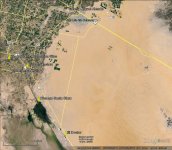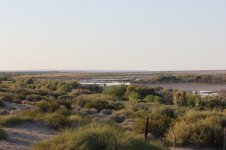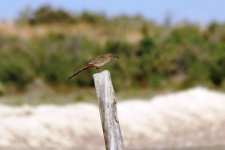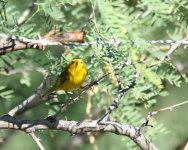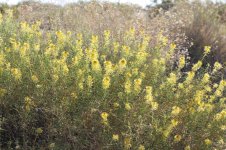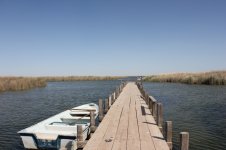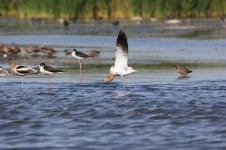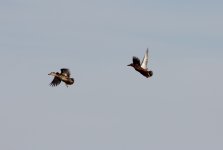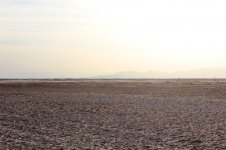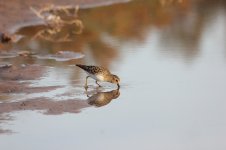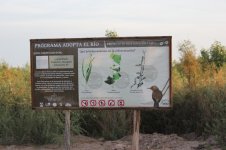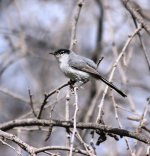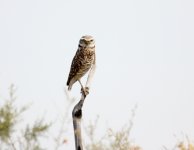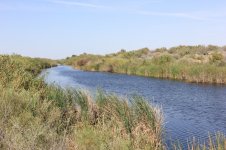ovenbird43
Well-known member

I visited this area in mid-late April as part of a larger team of researchers to investigate the effects of a large water release (“pulse flow”) into the Colorado River channel. Scientists from both Mexico and the US were out in force, measuring water flow, seed dispersal, and seedling sprouting - I was there to observe the foraging behavior of birds. While it is too soon to speculate on how well the birds are responding to the pulse flow, I can share my experiences with the area's birds and provide information to anyone interested in visiting the area.
Logistics:
Most of the study areas were public lands that could be visited by anybody, although they were generally not well-signed (except Cienega Santa Clara) and interested birders should contact a local guide for directions or assistance getting to the sites (see http://mexicobirdingtrail.org/plan-a-trip/colorado-river-delta/). I had no trouble getting around in my car (although I ALMOST get stuck on an unfamiliar "road" that abruptly turned into a long sand pit...:t: but this wasn't on the way to the sites described here), but then again I'm willing to take my junker onto anything I feel I can get away with- others might feel better using a truck, although 4x4 shouldn't be necessary. Conditions on the road to Cienega Santa Clara though are apparently subject to frequent change, even in the two-week span I spent there; sand piled up rapidly one evening during a dust storm.
There are hotels in the border town of San Luis Rio Colorado, and all sites can be reached within an hour and a half from there. Gas and delicious tacos are available in the small town of Luis B. Sanchez, closer to these sites. I can’t attest to any of lodging options - I was hosted by Juan Butrón at his house in a tiny community near Cienega de Santa Clara.
I crossed the border twice, and neither time did the Mexican authorities even look at my passport or stamp it. Not sure what would have happened had I been detained in Mexico for any reason - to be safe, one might want to get a Mexican tourist visa at the consulate in Yuma ahead of time. Returning to the US took at least a half hour of waiting in line both times.
Logistics:
Most of the study areas were public lands that could be visited by anybody, although they were generally not well-signed (except Cienega Santa Clara) and interested birders should contact a local guide for directions or assistance getting to the sites (see http://mexicobirdingtrail.org/plan-a-trip/colorado-river-delta/). I had no trouble getting around in my car (although I ALMOST get stuck on an unfamiliar "road" that abruptly turned into a long sand pit...:t: but this wasn't on the way to the sites described here), but then again I'm willing to take my junker onto anything I feel I can get away with- others might feel better using a truck, although 4x4 shouldn't be necessary. Conditions on the road to Cienega Santa Clara though are apparently subject to frequent change, even in the two-week span I spent there; sand piled up rapidly one evening during a dust storm.
There are hotels in the border town of San Luis Rio Colorado, and all sites can be reached within an hour and a half from there. Gas and delicious tacos are available in the small town of Luis B. Sanchez, closer to these sites. I can’t attest to any of lodging options - I was hosted by Juan Butrón at his house in a tiny community near Cienega de Santa Clara.
I crossed the border twice, and neither time did the Mexican authorities even look at my passport or stamp it. Not sure what would have happened had I been detained in Mexico for any reason - to be safe, one might want to get a Mexican tourist visa at the consulate in Yuma ahead of time. Returning to the US took at least a half hour of waiting in line both times.
Last edited:




